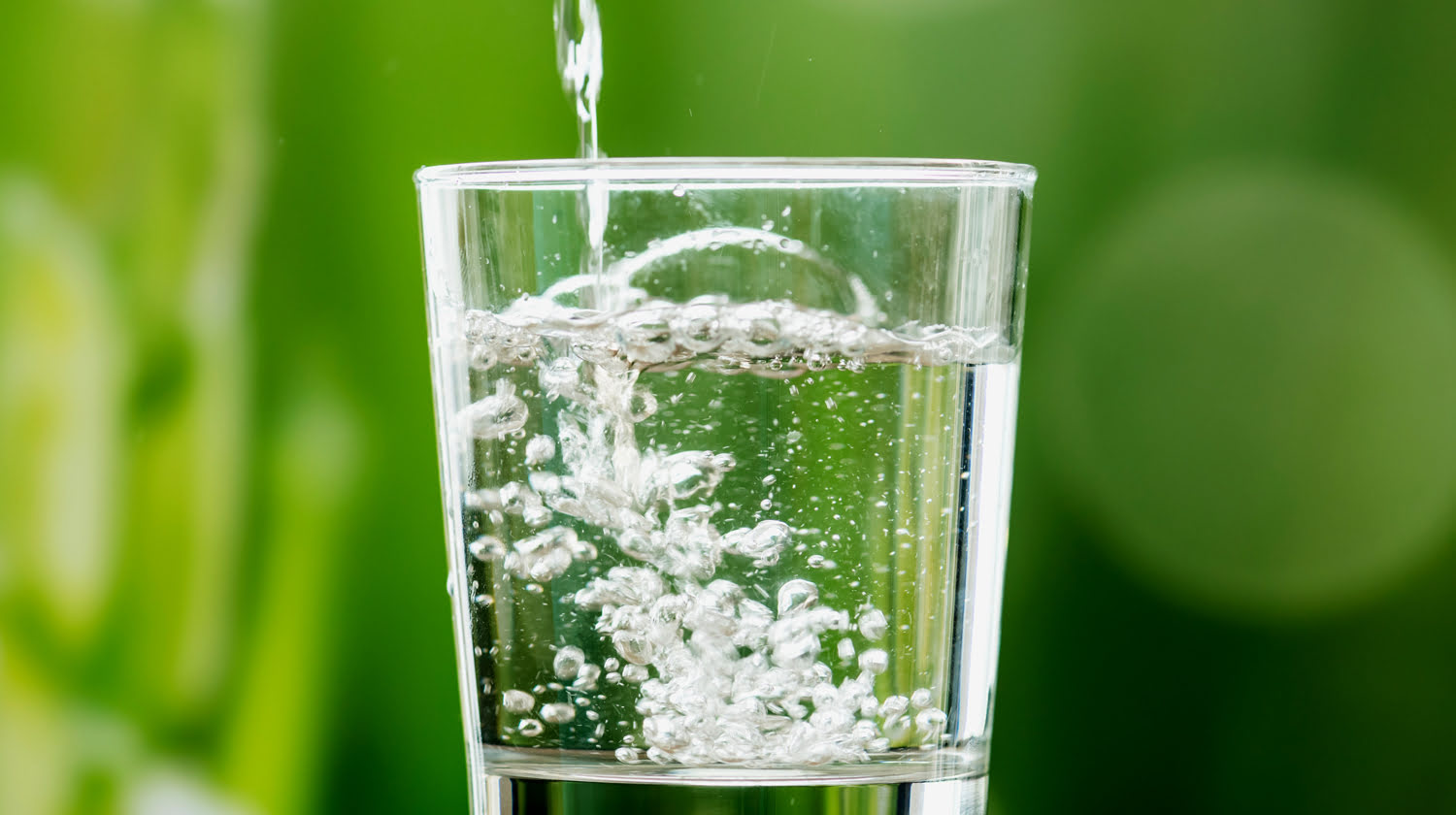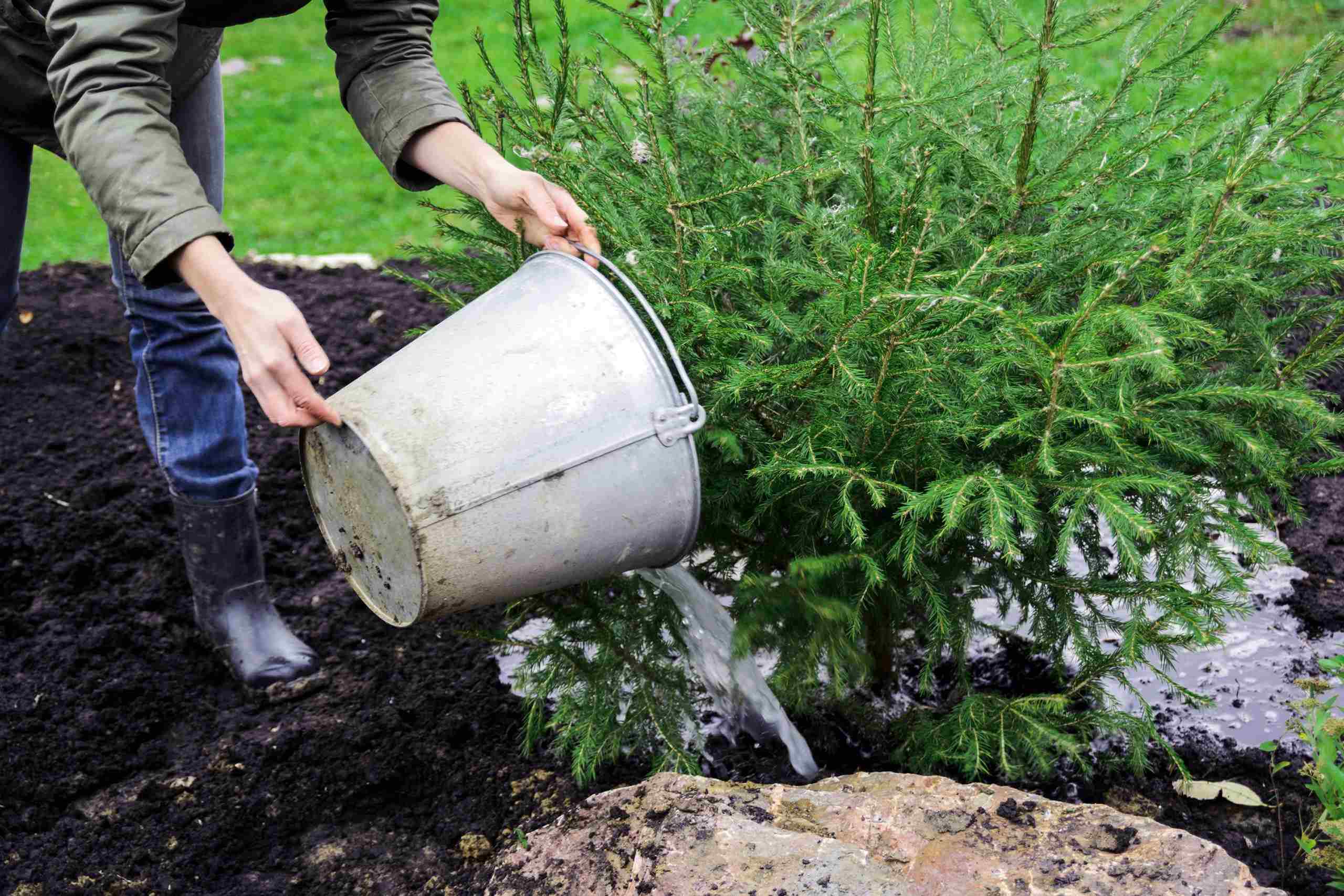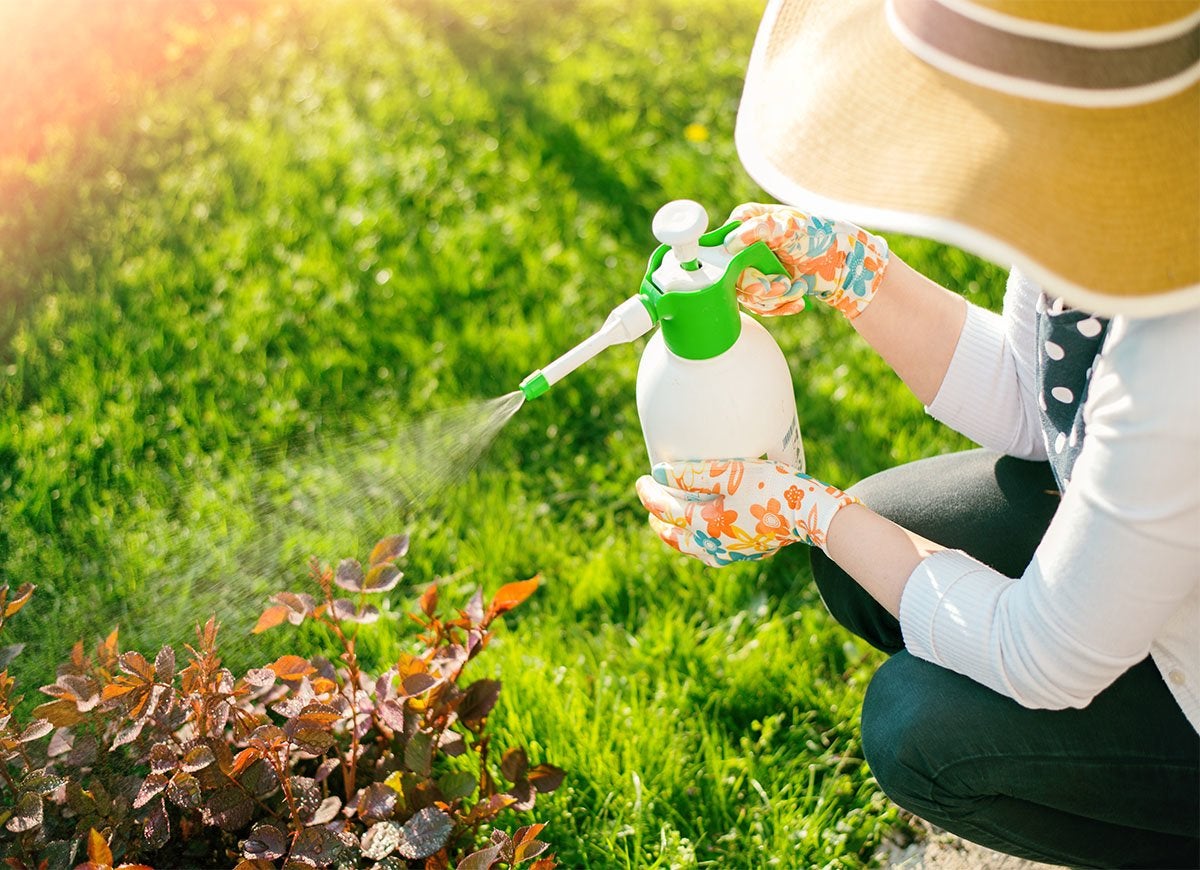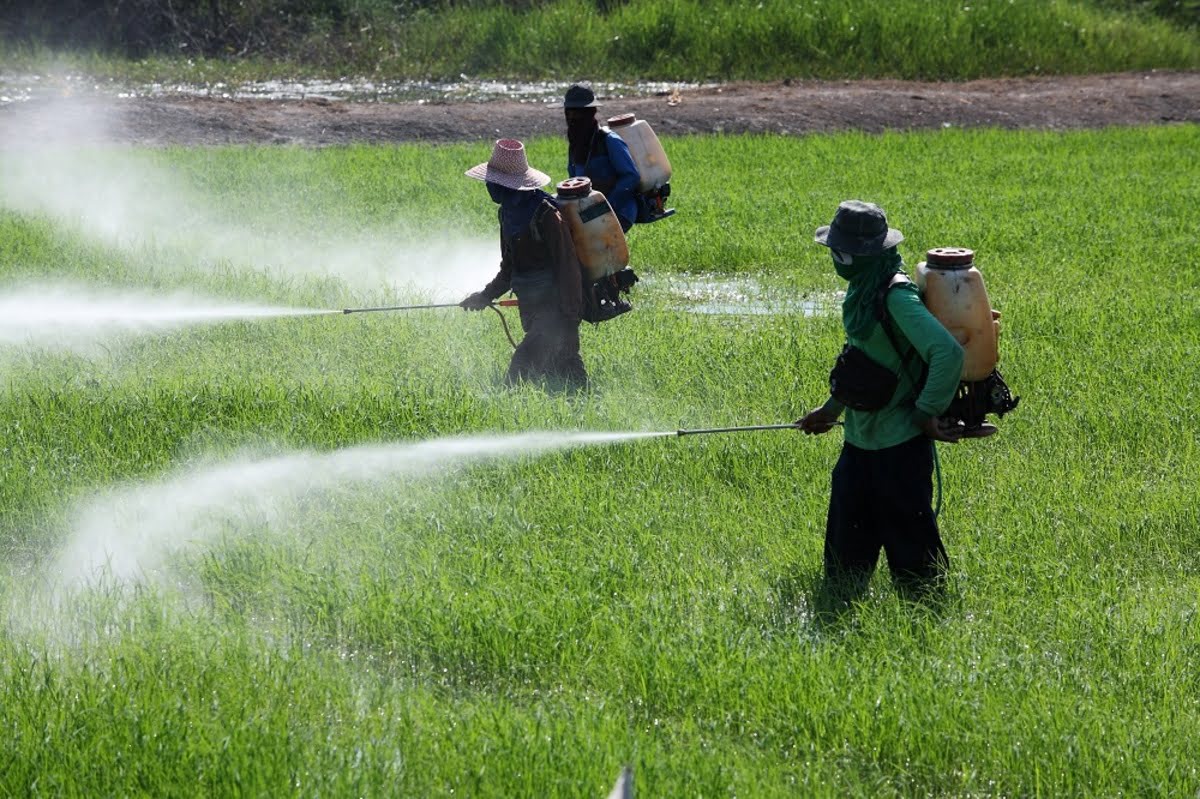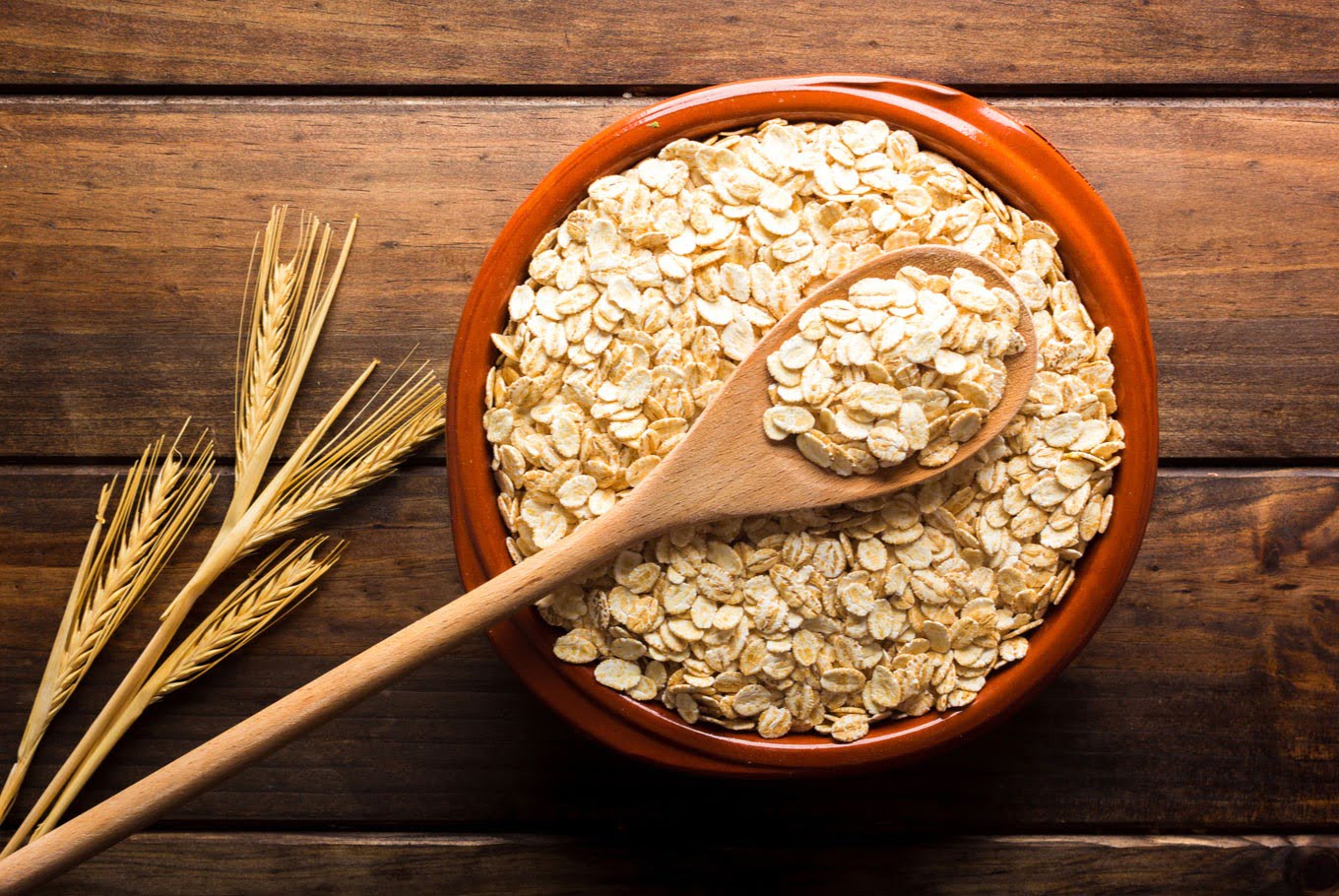Home>Gardening News and Trends>Latest News>How Does Pesticides Affect Water Quality
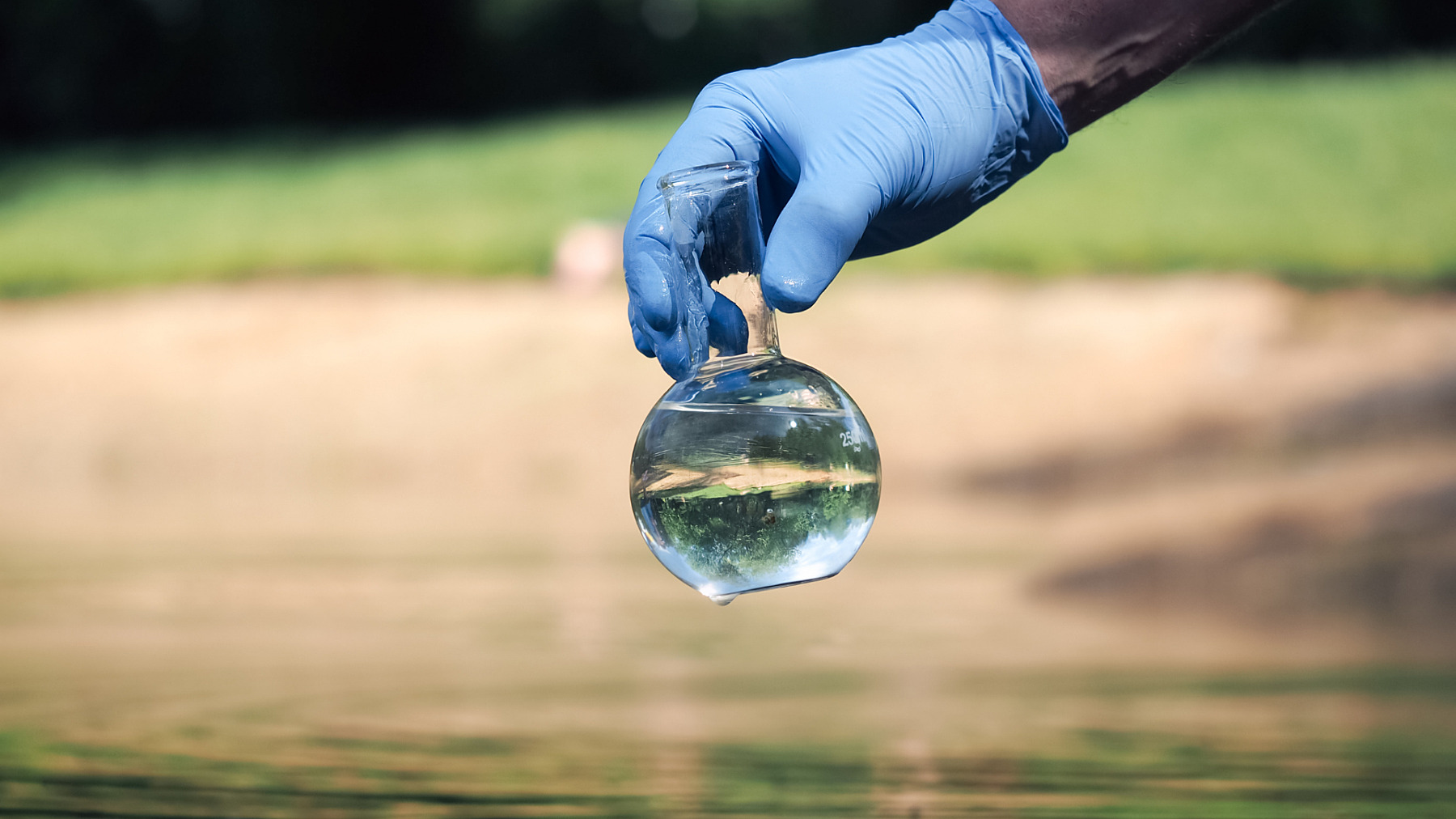

Latest News
How Does Pesticides Affect Water Quality
Modified: January 22, 2024
Discover the latest news on how pesticides impact water quality and learn about the potential risks they pose to human and environmental health. Stay informed and protect our water resources.
(Many of the links in this article redirect to a specific reviewed product. Your purchase of these products through affiliate links helps to generate commission for Chicagolandgardening.com, at no extra cost. Learn more)
Table of Contents
- Introduction
- Overview of Pesticides
- Sources of Pesticides in Water
- Transport and Fate of Pesticides in Water
- Effects of Pesticides on Water Quality
- Impacts of Pesticides on Aquatic Life
- Human Health Concerns
- Regulatory Measures for Pesticide Management
- Strategies for Reducing Pesticide Contamination in Water
- Conclusion
Introduction
Welcome to our comprehensive guide on the impact of pesticides on water quality. Pesticides play a crucial role in modern agriculture by protecting crops and controlling pests. However, their use comes at a price, as they can have detrimental effects on our environment, especially when they find their way into our water sources.
Water is one of our most precious resources, and its quality is essential for the well-being of both humans and ecosystems. It is important to understand how pesticides can affect water quality and the potential consequences that can arise from contamination. This knowledge can help us make informed decisions to mitigate these impacts and protect our water resources.
Pesticides encompass a wide range of chemical compounds that are designed to kill or control pests such as insects, weeds, and fungi. These substances are typically applied to agricultural fields, gardens, and even our homes to protect crops and prevent the spread of diseases.
Despite their intended purpose, pesticides can enter water bodies through various pathways. Runoff from agricultural and urban areas, leaching from soil, and direct application near water sources are common routes for pesticides to enter our rivers, lakes, and groundwater. Once in the water, these chemicals can persist and transport to other areas.
The presence of pesticides in water can lead to several negative consequences. One of the primary concerns is the impact on aquatic life. Many pesticides are toxic to aquatic organisms, such as fish, amphibians, and invertebrates. Exposure to these chemicals can impair reproduction, growth, and overall population dynamics, leading to a decline in biodiversity.
Furthermore, pesticide contamination in water raises concerns about human health. Consuming water contaminated with pesticides can pose risks, especially if the concentrations exceed safe limits. Long-term exposure to certain pesticides has been linked to various health issues, including endocrine disruption, developmental abnormalities, and even cancer.
To mitigate the impacts of pesticide contamination, regulatory measures have been put in place to monitor and manage pesticide use. Government agencies and organizations establish guidelines and restrictions on pesticide application, aiming to minimize environmental damage and protect public health.
In this guide, we will explore the sources of pesticides in water, the transport and fate of these chemicals, the effects on water quality, their impacts on aquatic life, human health concerns, and the regulatory measures implemented to mitigate pesticide contamination. Additionally, we will provide strategies for reducing pesticide contamination in water to ensure the long-term sustainability of our water resources.
Overview of Pesticides
Pesticides are chemical substances used to control or eliminate pests that can harm crops, transmit diseases, or cause damage to structures. These substances can include insecticides, herbicides, fungicides, rodenticides, and many others. They are an integral part of modern agriculture and have greatly contributed to increased food production.
Each type of pesticide is designed to target specific pests and is formulated with chemicals that can effectively eliminate or control them. For example, insecticides are used to kill or repel insects, herbicides are used to kill or inhibit the growth of weeds, and fungicides are used to control fungal diseases in plants.
It’s worth noting that not all pesticides are synthetic chemicals. Some are derived from natural sources, such as plants or bacteria, and are considered biopesticides. These biopesticides offer an alternative to synthetic pesticides and are considered to have lower environmental impacts.
Pesticides can be applied in various ways, including spraying, dusting, seed treatment, and soil application. The choice of application method depends on the target pest, the type of pesticide, and the specific crop or area being treated.
While pesticides have been effective in controlling pests and increasing agricultural productivity, their use has raised concerns about potential adverse effects on the environment and human health. Pesticides can enter the environment through different routes, including spraying and runoff from agricultural fields, as well as home and garden use.
Once pesticides are introduced into the environment, they can undergo various processes that determine their fate. These processes include degradation, adsorption onto soil particles, leaching into groundwater, and transport through surface water. The persistence and mobility of pesticides vary depending on their chemical properties.
It’s important to note that the use of pesticides is regulated to ensure their safe and responsible application. Regulatory authorities establish guidelines and restrictions on the types of pesticides that can be used, the allowable concentrations, and the application methods. These regulations aim to protect human health and the environment while balancing the need for effective pest control.
In the following sections, we will delve deeper into the specific sources of pesticides in water, their transport and fate, and the impacts they can have on water quality and aquatic life. Understanding these aspects will highlight the need for careful pesticide management and the importance of implementing strategies to reduce pesticide contamination in water.
Sources of Pesticides in Water
The presence of pesticides in water can be attributed to various sources, including agricultural activities, urban areas, and even home pesticide use. Understanding these sources is crucial in addressing pesticide contamination and implementing effective prevention strategies.
Agricultural activities are one of the primary contributors to pesticide contamination in water. Pesticides are extensively used in farming to protect crops from pests, diseases, and weeds. During application, a portion of the pesticides can drift or be carried by wind currents, potentially reaching neighboring streams, rivers, or lakes. Moreover, when irrigation is used, pesticides can be transported through runoff and enter nearby water bodies.
Runoff from agricultural fields is a significant pathway for pesticides to enter water. Rainwater can pick up pesticides present on the soil surface and carry them along with the flowing water towards streams and rivers. The extent of runoff depends on factors such as soil type, slope, and precipitation patterns.
Leaching is another important mechanism by which pesticides can enter groundwater. When pesticides are applied to the soil, they can percolate downward along with water, reaching the water table. The potential for leaching depends on factors such as soil characteristics, pesticide properties, and the depth of the water table.
Urban areas also contribute to pesticide contamination in water. Pesticides are commonly used in landscaping, parks, golf courses, and residential gardens to control weeds and insects. Excess or improper application can result in pesticide runoff during rainfall events, leading to their entry into stormwater systems and ultimately reaching nearby water bodies.
Home pesticide use is another source of contamination, albeit on a smaller scale compared to agricultural and urban sources. Pesticides applied in and around homes, such as for pest control or gardening purposes, can be washed off during rain or irrigation and find their way into local water sources.
In addition to these direct sources, pesticide residues can also enter water bodies indirectly through atmospheric deposition. Pesticides may volatize from treated areas and be transported over long distances by air currents before being deposited as dust or precipitation. Once deposited, they can eventually make their way into water bodies through surface runoff or infiltration.
Overall, the sources of pesticides in water are diverse and encompass agricultural, urban, and home applications, as well as atmospheric deposition. It is important to recognize the significant role that each of these sources plays in pesticide contamination and to implement measures to reduce their impact on water quality.
In the next section, we will explore the transport and fate of pesticides in water, shedding light on how these chemicals move through the environment and potentially reach different water sources.
Transport and Fate of Pesticides in Water
Once pesticides enter water bodies, they can undergo various processes that determine their transport and fate. Understanding these processes is essential for predicting pesticide behavior in water and implementing appropriate management strategies.
One of the primary mechanisms of pesticide transport in water is surface runoff. When rainfall occurs, water washes over the soil surface, picking up pesticides present on the surface and carrying them along. The extent of runoff depends on factors such as precipitation intensity, soil type, slope, and vegetation cover. Pesticides can be transported through streams, rivers, and other watercourses, potentially affecting downstream ecosystems.
In addition to surface runoff, pesticides can also be transported through subsurface flow. This occurs when water percolates through the soil and carries pesticide residues downward. Pesticides can reach groundwater and potentially contaminate drinking water sources. The extent of this transport depends on factors such as soil characteristics, pesticide properties, and the depth of the water table.
Once in water, pesticides can undergo various fate processes that determine their persistence and behavior. Degradation is a crucial process that affects pesticide concentrations over time. Pesticides can degrade through chemical reactions, biological processes, or exposure to sunlight. The rate of degradation varies depending on factors such as pesticide type, environmental conditions, and the presence of microorganisms.
Pesticides can also undergo adsorption onto soil particles or sediment in water bodies. This process, known as sorption, can influence the distribution and mobility of pesticides. Sorption can reduce pesticide concentrations in water by binding them to soil particles, preventing their movement. However, the extent of sorption depends on factors such as soil properties, pesticide characteristics, and the presence of organic matter.
In addition to sorption, volatilization is another fate process that can impact pesticide concentrations in water. Volatilization refers to the evaporation of pesticides from water surfaces back into the atmosphere. This process can occur for certain volatile pesticides, especially those with low water solubility. The rate of volatilization depends on factors such as temperature, air movement, and pesticide properties.
The transport and fate of pesticides in water can be influenced by various factors, including pesticide properties, environmental conditions, and the characteristics of the water bodies. Some pesticides have higher mobility and persistence, making them more likely to travel long distances in water and persist in the environment. Others may degrade rapidly or bind strongly to soil particles, limiting their movement.
Understanding the transport and fate of pesticides is crucial for developing strategies to mitigate their impact on water quality. By considering factors such as pesticide application practices, runoff prevention measures, and the implementation of best management practices, it is possible to reduce the transport of pesticides in water and minimize their potential environmental and health effects.
In the next section, we will explore the effects of pesticides on water quality, highlighting the potential consequences of pesticide contamination for both ecosystems and human health.
Effects of Pesticides on Water Quality
Pesticides can have significant impacts on water quality, with potential consequences for both ecosystems and human health. Understanding these effects is crucial for developing strategies to protect water resources and mitigate the risks associated with pesticide contamination.
One of the primary concerns regarding pesticide contamination in water is its impact on aquatic life. Pesticides can be highly toxic to aquatic organisms, including fish, amphibians, invertebrates, and algae. Exposure to pesticides can impair reproduction, growth, and development, leading to population decline and reduced biodiversity in aquatic ecosystems.
Insecticides, for example, can directly affect aquatic insects, which play vital roles in nutrient cycling and food webs. By targeting insects, these pesticides can disrupt the balance of aquatic ecosystems, affecting the populations of other organisms that rely on insects for food or ecological services.
Herbicides, commonly used to control weeds, can also have significant effects on water quality. They can inhibit the growth and reproduction of aquatic plants, impacting the composition and function of underwater habitats. Aquatic plants provide important habitat and food sources for many organisms, and their removal or reduction can lead to changes in species composition and ecosystem functioning.
Fungicides, used to control fungal diseases in plants, can also enter water bodies and affect aquatic organisms. These chemicals can disrupt fungal communities, which play crucial roles in nutrient cycling and decomposition processes. Changes in fungal communities can alter the structure and function of ecosystems.
Aside from the direct effects on aquatic life, pesticide contamination in water raises concerns about human health. Consuming water contaminated with pesticides can pose risks to human health, especially if the concentrations exceed safe limits. The long-term exposure to certain pesticides has been associated with various health issues, including endocrine disruption, developmental abnormalities, and an increased risk of certain cancers.
Furthermore, the presence of pesticides in water sources can impact the quality of drinking water. Many pesticides are not easily removed by conventional water treatment processes, making it challenging to ensure safe and clean drinking water for communities. This highlights the importance of preventive measures to reduce pesticide contamination in water sources and protect public health.
It’s crucial to note that the effects of pesticides on water quality can vary depending on factors such as the type of pesticide, concentration, exposure duration, and the sensitivity of the affected organisms. Additionally, the presence of multiple pesticides or interactions with other pollutants can further exacerbate the effects on water quality.
Overall, the effects of pesticides on water quality are a significant concern for both ecological and human health reasons. By understanding these effects, implementing sustainable agricultural practices, and promoting responsible pesticide use, we can work towards protecting our water resources and ensuring a safe and healthy environment for all.
In the next section, we will delve into the specific impacts of pesticides on aquatic life, shedding light on the consequences of pesticide contamination for the delicate ecosystems that rely on water.
Impacts of Pesticides on Aquatic Life
Pesticide contamination in water can have severe impacts on aquatic life, disrupting ecosystems and endangering the health and survival of numerous species. Understanding these impacts is crucial for implementing measures to protect the delicate balance of aquatic ecosystems.
One of the primary concerns regarding pesticide contamination is its toxic effects on fish. Pesticides can directly harm fish by causing physiological stress, impairing reproduction, and affecting growth and development. Some pesticides, such as organophosphates and pyrethroids, can interfere with the nervous system of fish, leading to behavioral abnormalities and even death.
Additionally, pesticides can have indirect effects on fish through the disruption of their food sources. Aquatic organisms, such as insects and small invertebrates, can be sensitive to pesticides and serve as important food sources for fish. The loss or reduction of these organisms due to pesticide contamination can impact the nutritional availability for fish, affecting their growth and overall population dynamics.
Pesticides can also affect amphibians, which are highly sensitive to environmental changes. Amphibians rely on both aquatic and terrestrial habitats, and their life stages can be exposed to pesticides through water or direct contact. These chemicals can disrupt amphibian development, impairing growth, and causing deformities. Pesticide contamination can also lead to population declines and local extinctions of amphibian species.
Invertebrates, such as crustaceans and mollusks, are also vulnerable to pesticide contamination. These organisms play vital roles in aquatic ecosystems, acting as decomposers, filter feeders, and indicators of ecosystem health. Pesticides can directly impact their survival, feeding behavior, and reproductive abilities, which can have cascading effects throughout the food web.
Moreover, pesticide contamination can disrupt the ecological processes of nutrient cycling and primary production in water bodies. Aquatic plants, vital for providing oxygen, shelter, and food sources, can be inhibited by herbicides. This loss of vegetation can result in decreased habitat complexity and reduced habitat availability for fish and other aquatic organisms.
Furthermore, the presence of pesticides in water can impact the diversity and abundance of microorganisms. These microscopic organisms play essential roles in nutrient cycling, organic matter decomposition, and maintaining water quality. Imbalances in microbial communities due to pesticide contamination can have far-reaching consequences for ecosystem functioning.
It’s important to note that some species may exhibit different sensitivities to pesticides, with some being more tolerant or more susceptible to certain chemicals. Additionally, the effects of pesticide contamination can be influenced by factors such as water temperature, pH levels, and the duration and concentration of exposure.
To mitigate the impacts of pesticides on aquatic life, it is crucial to implement sustainable and responsible pesticide use practices. This includes minimizing pesticide application, adopting alternative pest control methods, and implementing buffer zones or vegetative barriers to reduce the runoff of pesticides into water bodies.
In the next section, we will explore the human health concerns associated with pesticide contamination in water, highlighting the need for safeguarding our water resources for both ecosystems and human well-being.
Human Health Concerns
Pesticide contamination in water poses significant concerns for human health, as these chemicals can find their way into drinking water sources and potentially pose risks to individuals exposed to contaminated water.
One of the primary concerns is the potential for acute toxicity from consuming water contaminated with high levels of pesticides. Acute exposure to certain pesticides can lead to immediate health effects, such as nausea, vomiting, diarrhea, and even neurological symptoms. These acute effects are more likely to occur in situations where accidental or intentional exposure to concentrated pesticide solutions or highly contaminated water takes place.
Long-term or chronic exposure to lower levels of pesticides in drinking water is another concern. Some pesticides have been linked to chronic health effects, including endocrine disruption, reproductive issues, developmental abnormalities, and increased risks of certain cancers. Prolonged exposure to these chemicals, even at low concentrations, may pose risks to human health, particularly for vulnerable populations such as infants, children, pregnant women, and individuals with compromised immune systems.
It is important to note that drinking water treatment processes, such as filtration and disinfection, may not effectively remove or degrade all types of pesticides. Some pesticides can persist in water and resist conventional treatment methods, potentially reaching consumers through their tap water.
Moreover, exposure to pesticides can occur through other pathways beyond drinking water. Agricultural workers who handle and apply pesticides, as well as individuals living near agricultural areas, may face additional exposure risks through inhalation, skin contact, or ingestion of pesticide-contaminated food or dust. These occupational and residential exposures can further contribute to the overall pesticide burden on human health.
It’s worth noting that the potential health risks associated with pesticide exposure can vary depending on factors such as the specific pesticide, concentration, duration of exposure, and individual susceptibility. The cumulative effect of multiple pesticides or the interaction with other pollutants may also amplify the health risks.
To protect human health from pesticide contamination in water, it is critical to implement preventive measures and rigorous water quality monitoring. This includes regular testing of drinking water sources for pesticide residues, as well as implementing effective pesticide management practices to minimize contamination in the first place.
Regulatory agencies play a crucial role in establishing guidelines and maximum allowable concentrations for pesticides in drinking water. Monitoring programs and enforcement of these regulations help to ensure that public water supplies meet the necessary safety standards.
Furthermore, raising awareness among individuals and communities about the potential risks of pesticide contamination in water can empower people to take proactive measures to safeguard their health. These measures may include using water filtration systems certified to remove pesticides, choosing organic produce, and properly disposing of pesticide containers and unused products.
By taking steps to reduce pesticide contamination in water and promoting responsible pesticide use, we can protect both aquatic ecosystems and human health, ensuring the availability of clean and safe water for future generations.
In the next section, we will explore the regulatory measures and strategies for reducing pesticide contamination in water, highlighting the importance of comprehensive pesticide management approaches.
Regulatory Measures for Pesticide Management
Regulatory measures play a vital role in managing and mitigating the risks associated with pesticide use and contamination. Governments, regulatory agencies, and international organizations have established guidelines and regulations to ensure the safe and responsible use of pesticides, protecting both the environment and human health.
One important aspect of pesticide management is the registration and approval process for pesticide products. Before a pesticide can be sold and used, it must undergo thorough testing and evaluation to assess its efficacy and potential risks. Regulatory agencies review scientific data on the pesticide’s toxicology, environmental fate, and ecological impacts to determine its safety and effectiveness.
Regulatory agencies also establish maximum residue limits (MRLs) for pesticides in food and drinking water to protect consumer health. MRLs dictate the allowable concentrations of pesticide residues in crops, ensuring that the levels are below the established thresholds of safety. Regular monitoring and enforcement of MRLs help to ensure compliance and safeguard public health.
In addition, regulatory authorities establish guidelines and restrictions for pesticide application to minimize environmental impacts. They may set limits on application rates, specify buffer zones near water bodies, and recommend best management practices for pesticide use in various settings, such as agriculture, urban areas, and public spaces.
Labeling requirements for pesticide products provide vital information for users, including application rates, safety precautions, and proper disposal methods. Regulatory agencies ensure that manufacturers provide accurate and comprehensive labeling, helping users make informed decisions and minimize the risks associated with pesticide use.
Monitoring programs are implemented to assess pesticide levels in water bodies, ensuring compliance with quality standards and identifying areas of concern. Regular water monitoring helps detect pesticide contamination and enables prompt action to mitigate the risks and protect water resources.
International organizations, such as the Food and Agriculture Organization (FAO) and the World Health Organization (WHO), provide guidance and promote international cooperation to enhance pesticide management. They develop global standards, facilitate knowledge-sharing, and support capacity-building initiatives among countries with varying levels of resources and expertise.
Public education and outreach programs are also crucial components of pesticide management. Raising awareness among farmers, pesticide applicators, and the general public about the potential risks associated with pesticides fosters a culture of responsible and sustainable pesticide use. Education initiatives can promote alternatives to pesticides, safe handling and disposal practices, and the importance of protecting water resources.
Integrated Pest Management (IPM) approaches are increasingly emphasized in pesticide management. IPM promotes the use of multiple pest control tactics, such as biological control, crop rotations, and cultural practices, to reduce reliance on pesticides. By integrating various pest management strategies, IPM minimizes pesticide use and reduces the risks of contamination.
Overall, regulatory measures for pesticide management are critical for ensuring the safe, responsible, and sustainable use of pesticides. By implementing and enforcing regulations, monitoring pesticide levels in water, and promoting education and outreach, authorities can protect both the environment and human health from the potential risks associated with pesticide contamination.
In the next section, we will explore strategies for reducing pesticide contamination in water, highlighting proactive approaches to protect our water resources.
Strategies for Reducing Pesticide Contamination in Water
Reducing pesticide contamination in water is crucial for safeguarding water resources and minimizing the risks to both ecosystems and human health. Implementing proactive strategies and adopting sustainable practices can help mitigate the impact of pesticides on water quality. Here are some key strategies for reducing pesticide contamination in water:
1. Integrated Pest Management (IPM): Implementing IPM strategies can help reduce the reliance on pesticides. IPM focuses on utilizing a combination of pest control tactics, such as biological control, crop rotations, and cultural practices, to prevent pest outbreaks and minimize the need for chemical pesticides. This approach promotes a more sustainable and environmentally friendly approach to pest management.
2. Precision Agriculture: Utilize precision agriculture techniques to optimize pesticide applications. By using technologies such as GPS and remote sensing, farmers can target specific areas that require pesticide treatment rather than applying chemicals uniformly across entire fields. This reduces the overall pesticide use and minimizes the potential for runoff and contamination.
3. Buffer Zones: Establishing buffer zones around water bodies can help reduce pesticide runoff. These vegetative strips or areas act as natural filters, capturing pesticides and preventing their entry into water sources. Buffer zones provide habitat for beneficial organisms, including pollinators and natural enemies of pests, enhancing the ecological balance of agricultural landscapes.
4. Cover Crops: Planting cover crops between cash crop seasons can help reduce erosion, retain soil moisture, and provide natural weed suppression. These cover crops act as a barrier and reduce pesticide runoff, as well as enhance soil health and fertility. They can also improve water infiltration, reducing the potential for pesticide leaching into groundwater.
5. Proper Pesticide Application: Following best management practices during pesticide application is critical for minimizing contamination. This includes ensuring accurate calibration of equipment, considering weather conditions for application timing, using appropriate nozzle types to reduce drift, and following label instructions meticulously. Avoiding overuse and using pesticides only when necessary can help minimize the overall pesticide load in the environment.
6. Education and Training: Providing education and training to farmers, pesticide applicators, and the general public is essential for promoting responsible pesticide use. Engaging in outreach programs that raise awareness about the potential risks of pesticide contamination in water can encourage individuals to adopt sustainable and environmentally friendly pest management practices.
7. Water Monitoring: Regular monitoring of water bodies for pesticide residues is crucial for early detection of contamination and prompt action. Monitoring programs can help identify areas of concern, evaluate the effectiveness of management practices, and guide future mitigation efforts. This information is vital for targeted interventions and ensuring the long-term health and sustainability of water resources.
By implementing a combination of these strategies, stakeholders can collectively reduce pesticide contamination in water. Effective pesticide management requires the collaboration of farmers, regulatory agencies, researchers, and the public to protect water resources, preserve ecosystems, and safeguard human health.
In the next section, we will summarize the key points discussed in this comprehensive guide on the impact of pesticides on water quality.
Conclusion
Pesticides play a crucial role in modern agriculture, but their impact on water quality cannot be overlooked. The contamination of water sources with pesticides poses risks to ecosystems, aquatic life, and human health. Understanding the sources, transport, and fate of pesticides in water is essential for implementing strategies to reduce contamination and protect our valuable water resources.
Agricultural activities, urban areas, and home pesticide use are major sources of pesticide contamination in water. Runoff, leaching, and atmospheric deposition are common pathways for pesticides to enter water bodies. Once in water, pesticides can persist, degrade, sorb to soil particles, or volatilize, influencing their mobility and potential for harm.
Pesticides have significant impacts on water quality, affecting aquatic life and human health. These chemicals can disrupt ecosystems, leading to declines in biodiversity and ecological imbalances. Exposure to pesticide-contaminated water can pose acute and chronic health risks, including developmental abnormalities, endocrine disruption, and increased cancer risks.
To address pesticide contamination, regulatory measures have been established to manage their use and reduce environmental impacts. These measures include product registration, labeling requirements, monitoring programs, and maximum residue limits. Integrated Pest Management (IPM) approaches promote sustainable practices to minimize pesticide use and reliance, contributing to the conservation of water quality.
Reducing pesticide contamination in water requires a multi-faceted approach. Strategies such as implementing IPM, utilizing precision agriculture techniques, establishing buffer zones, and promoting proper pesticide application can mitigate contamination risks. Education, outreach, and water monitoring are also essential components of effective pesticide management.
By adopting these strategies and working collaboratively, stakeholders can protect our water resources, preserve ecosystems, and safeguard human health. A collective effort is necessary to ensure the long-term availability of clean and safe water for future generations.
It is vital to prioritize pesticide management practices that minimize water contamination while maintaining agricultural productivity. By embracing sustainable approaches and integrating pest control strategies, we can strike a balance between the benefits of pesticide use and the protection of water quality.
Together, let’s strive towards responsible pesticide use, effective monitoring, and continuous improvement in pesticide management to safeguard our water resources and the health of our ecosystems and communities.

